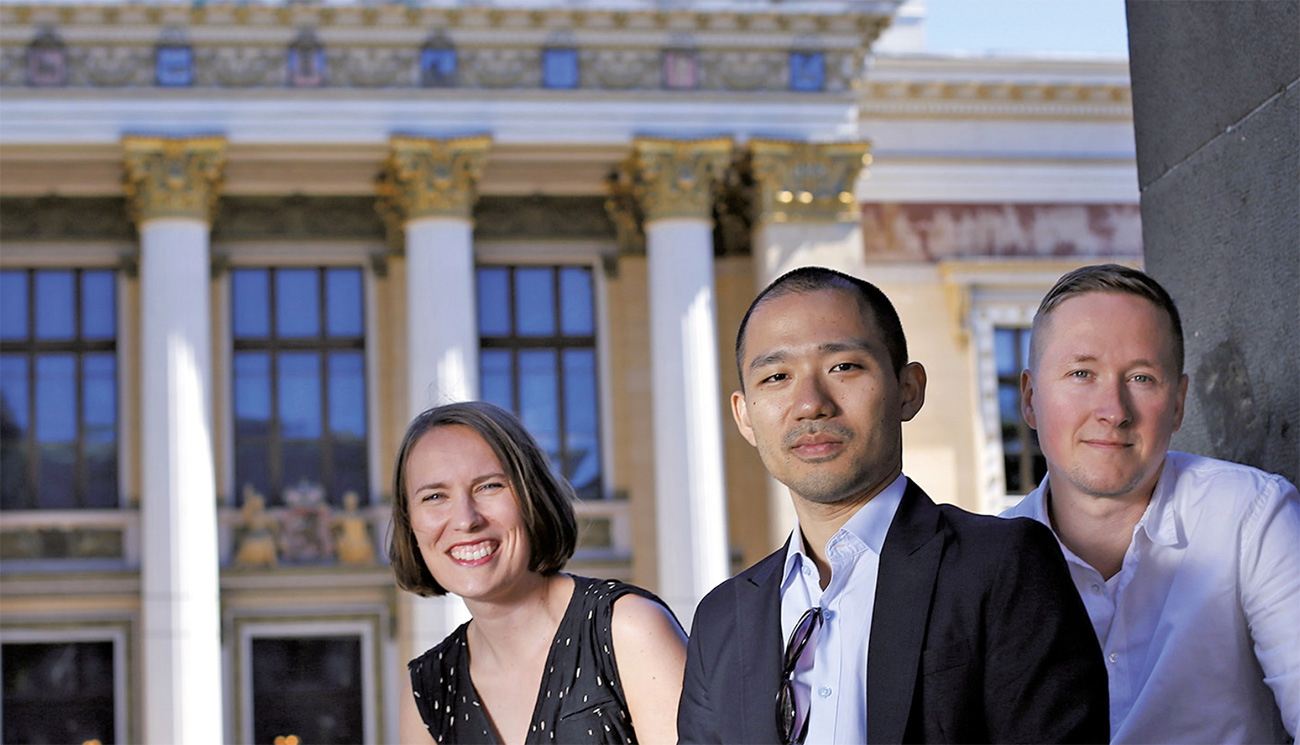Journalist Hannu Pöppönen interviewed the founders of DfG in the latest issue of Ornamo, the magazine of the Finnish Association of Designers with the same name. The article’s topic was “The design process as an opportunity to expand”, and DfG was featured as one example. Among design work, design agencies offer more and more expert services in different client industries. Service design is gradually being taken seriously also in the municipalities. Here is a peek from the article in English.
Designers build bridges

“In the future and in the best case, the designer’s task is to act as a facilitator of objects, spaces, people and organisations”
Says designer and researcher Seungho Lee. Together with architect Hella Hernberg and design researcher Juha Kronqvist, he has taught the deployment of user-centred design in society and governance at the Aalto University’s project Design for Government.
“User-centred design helps us understand what people really need and what challenges and opportunities there are in implementing services and decision-making. Often the end result of design is a service or a policy that is done together with civil servants, beneficiaries and many other people.”
User-centric design methods can help governments and other public sector institutes to open up their decision-making processes to citizens and other stakeholders. It makes it also possible for citizens to participate better in the development of public services. “The designer is a bridge-maker that explores possibilities and aims to find a synthesis of all the challenges”, Lee says.
When designers work in public sector organisations, they can affect changes and reforms more effectively and spread design understanding within the organisations. Working from within organisations is also important because it makes it easier to give assignments to external agencies and create the design briefs for projects. A design brief includes the project’s objectives, current state and desired outcome in addition to resources and people that can be a part of it. “In current design challenges, such as ageing, climate change and health care, these components are unclear. Especially in projects where the possibilities have as an important role as challenges”, Lee says.
He is researching the design brief in his dissertation underway. The design brief evolves during the project, which does not mean it would not be important. “It defines a good starting point and gives the designer and client organisation a chance to deeply think what is needed and how do we know that we have achieved our aim. When the brief is clear, it enables accurate proceeding, although the brief would be refined or even deconstructed during the project. One key factor in planning and designing services is a culture of experimentation, which has just been written as an objective in the government programme.
Methods are borrowed from other fields of science, such as anthropology. Prototyping and iterating are quick and effective methods, which are used in design processes. They are risk free and cost-effective methods also in developing public services. It is more fruitful to work step-by-step and through trial and error than trying to get all the solutions in one go.
The whole article (p.11) in Finnish can be read in the magazine or you can download it here.

1 thought on “DfG in Ornamo Magazine”
Comments are closed.